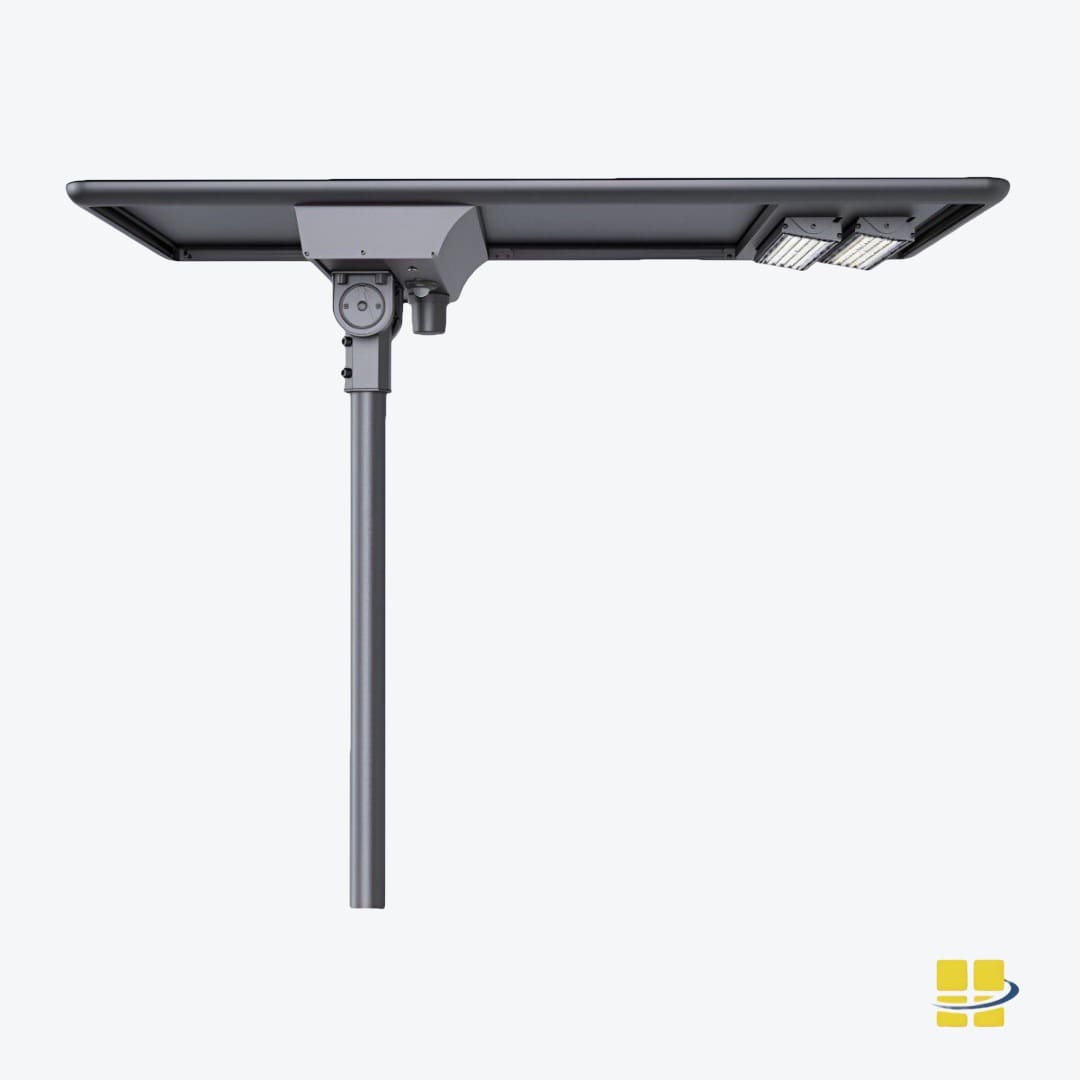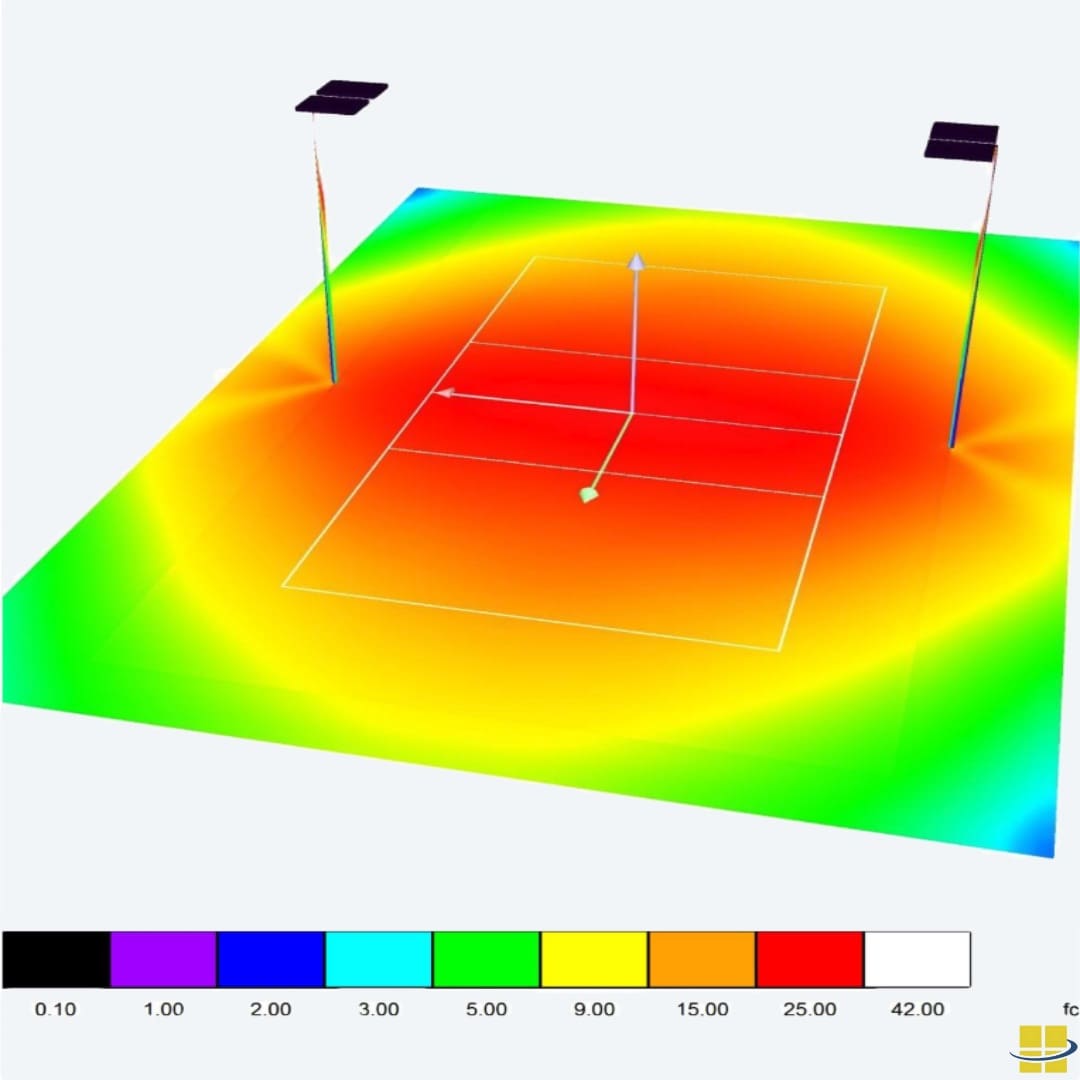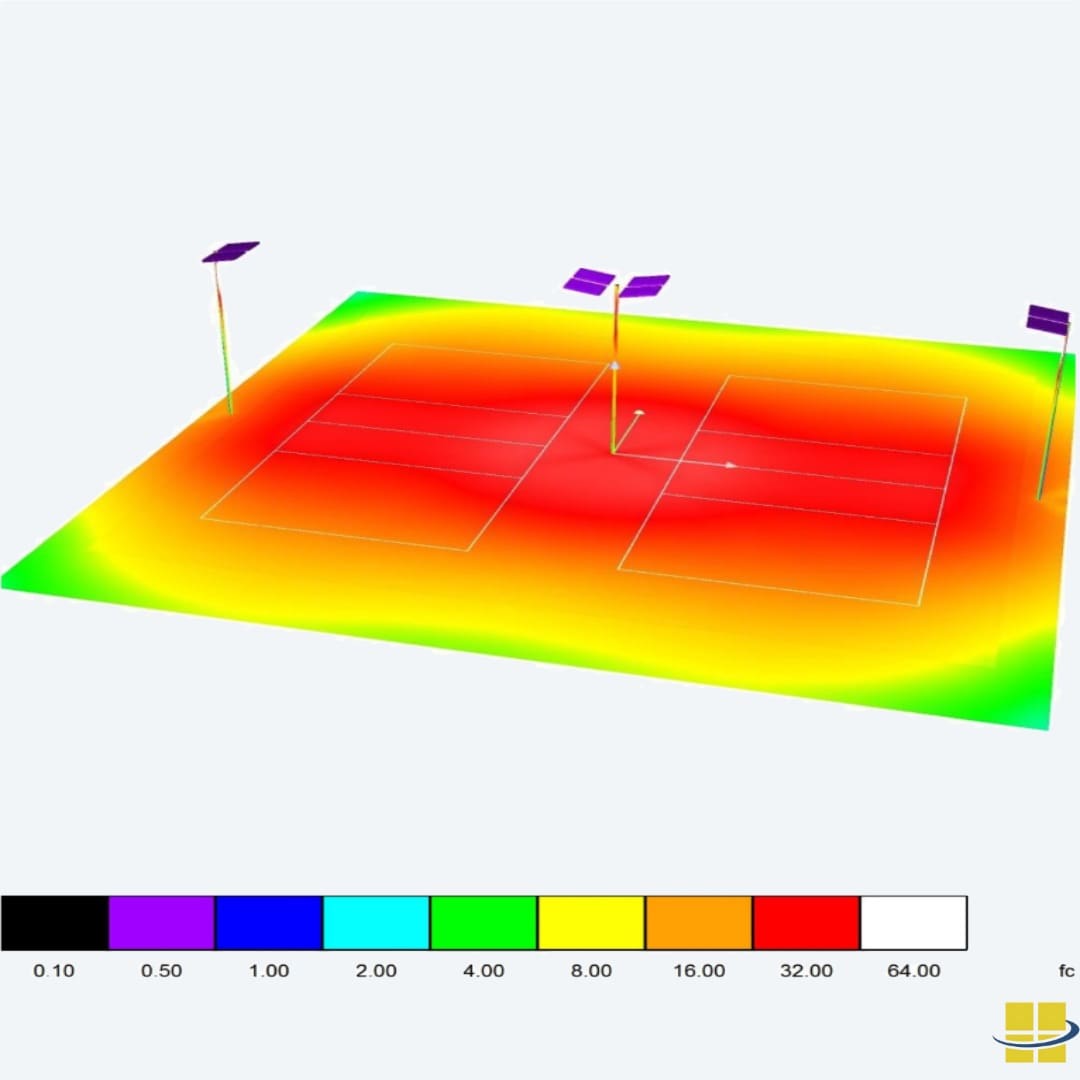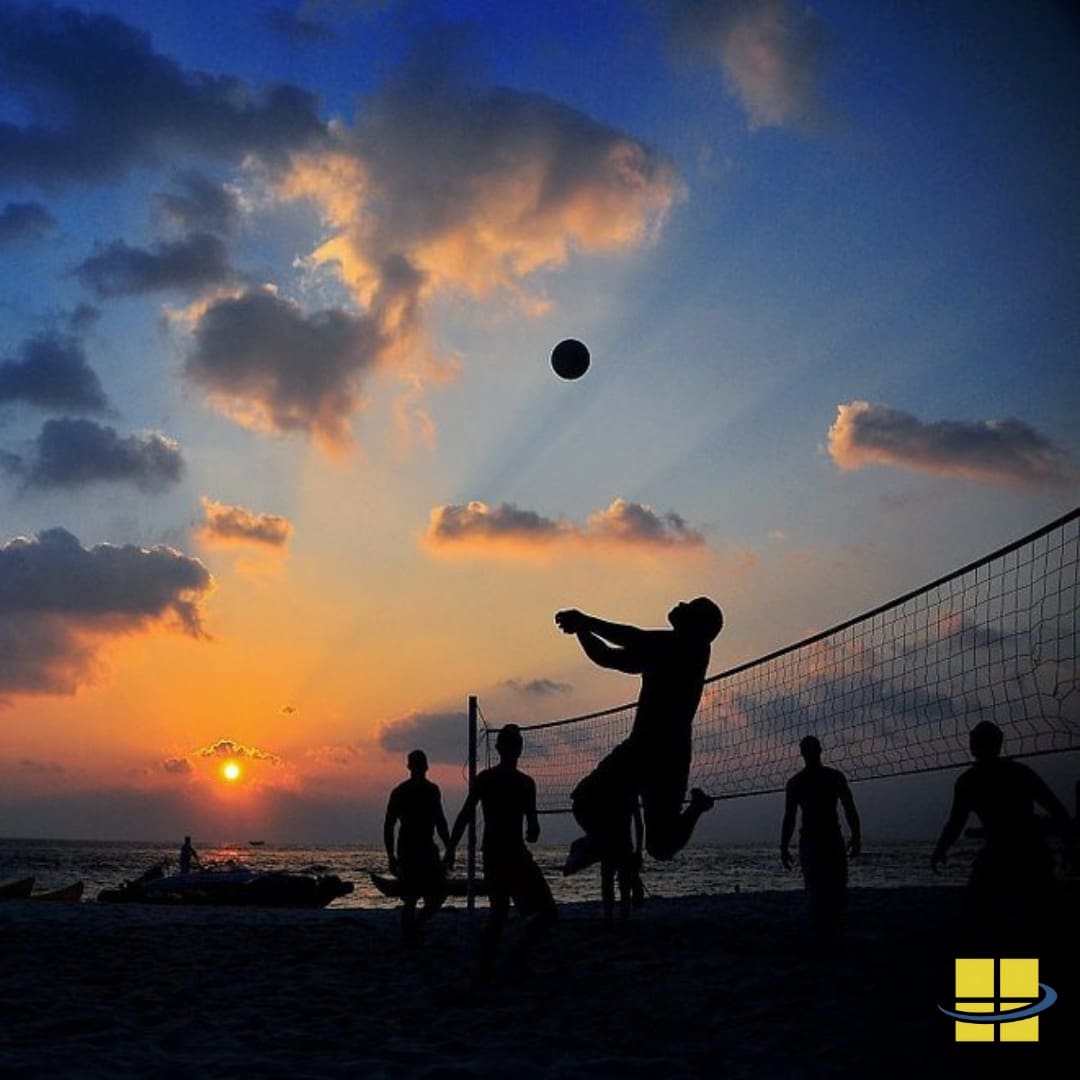Lighting for volleyball courts is crucial for ensuring safety, enhancing performance, and providing a visually appealing environment for players and spectators alike. However, with increasing awareness about light pollution, it’s important to select fixtures that are dark sky compliant. This guide will explain the essential aspects of Dark Sky compliant LED lights for volleyball court lighting, covering everything from lighting requirements and standards to the specific design features that make fixtures compliant. We will also explore the benefits of solar area lights for volleyball courts, ensuring optimal illumination while adhering to dark sky standards.
Key Takeaways
-
- Installation Costs: Dark sky compliant solar LED systems have higher upfront costs due to specialized fixtures and solar components.
- Cost Efficiency: Solar lighting lowers long-term costs with minimal maintenance, ideal for sustainable, off-grid applications. LED lights are also known for their energy efficiency, providing strong illumination while reducing operational costs.
- Dark Sky Compliance: Solar LED lighting reduces light pollution, supporting sustainability and adhering to dark sky standards.
Volleyball Court Lighting Requirements and Standards
Footcandles and Light Uniformity
For volleyball courts, proper illumination is essential to ensure players can see the ball clearly, even during fast-paced action. The recommended lighting levels for volleyball courts are typically:
-
Recreational Play: 20-30 footcandles (fc)
-
Competitive Play: 30-50 footcandles (fc)
-
Professional Play: 50-75 footcandles (fc)
Uniform lighting is critical to avoid shadows and ensure consistent visibility across the court. In indoor volleyball courts, selecting appropriate lighting fixtures and strategies for layout is crucial to achieving optimal illumination. A max/min ratio of 2.0 or less is generally recommended to achieve this uniformity.
Pole Heights and Placement
The height and placement of light poles play a significant role in achieving optimal illumination. For lighting volleyball courts, poles are usually:
- Standard Pole Height: 20-30 feet
- Placement: Evenly spaced around the court to minimize shadows and provide uniform lighting
Proper light pole placement ensures light is directed where needed, reducing unnecessary light spill and supporting dark sky standards.
Key Features of Dark Sky Compliant Fixtures
Full Cut-Off Design
A full cut-off design ensures that light is directed downward, reducing glare and preventing light from spilling into the sky. This design is crucial for dark sky compliance as it minimizes light pollution and enhances the efficiency of the lighting system. For volleyball players, this means that the light is focused on the court, providing clear visibility of the ball at various heights without causing discomfort from stray light. This is especially important when players need to track the ball at high arcs and fast speeds, ensuring consistent visual performance throughout the game.
Color Temperature: 3000K or Less
Fixtures with a color temperature of 3000K or lower emit a warm light that is less likely to contribute to skyglow. Warm lighting is not only more environmentally friendly but also more comfortable for human eyes, reducing glare and improving visibility. For volleyball players, a 3000K light provides a balanced and comfortable visual environment, reducing eye strain and allowing players to see the ball clearly against different backgrounds.
Shielded Fixtures
Shielded fixtures are designed to focus light exactly where it is needed. By using shields or hoods, these fixtures prevent light from escaping upwards or sideways, ensuring that the illumination is confined to the court area. This focused lighting minimizes glare, which is crucial for volleyball players who need to maintain clear vision of the ball and their surroundings. Shielded fixtures reduce the risk of blinding glare, allowing players to perform at their best without visual hindrances.
BUG Ratings
BUG ratings (Backlight, Uplight, and Glare) are a standardized way to evaluate the impact of outdoor lighting fixtures. A low BUG rating indicates that a fixture effectively minimizes light pollution. For dark sky compliance:
- Backlight (B): Measures light directed behind the fixture.
- Uplight (U): Measures light directed upwards.
- Glare (G): Measures the intensity of light that causes visual discomfort.
Dark sky compliant fixtures typically have low Uplight and Glare ratings, ensuring minimal light pollution and glare. For volleyball players, this means fewer distractions from unwanted light and a clearer view of the court, enhancing both safety and performance.
Access Fixtures Solar Area Lights for Volleyball Court Lighting
SUNA Solar Area Lights
The SUNA solar area lights are an excellent choice for volleyball courts, offering high-capacity batteries and extremely efficient LEDs. Constructed with premium corrosion-resistant aluminum alloy and 316 stainless steel components, these lights are built to last. An ultra-strong slip fitter ensures durability, and the lights are IP66 and IK08-rated for water and dust resistance.
Features
-
High Efficiency: Achieving an impressive 195 lumens per watt, maximizing energy utilization for optimal brightness while minimizing power consumption. LED fixtures offer additional benefits such as energy efficiency, durability, and even illumination, making them ideal for both outdoor and indoor volleyball court lighting.
-
All-in-One Design: Simplifies installation and operation for hassle-free off-grid lighting.
-
Cost-Efficient Operation: Harnessing solar power eliminates electricity bills, resulting in significant long-term savings and reduced maintenance.
-
Enhanced Safety: Mitigates the risk of accidents related to power outages, providing a safer environment for players.
-
Environmentally Friendly: Utilizing solar energy ensures a clean and sustainable power source, reducing carbon emissions.
-
Flexible Installation: Can be installed virtually anywhere, illuminating even the most remote locations.
-
Robust Protection: Built to withstand harsh environments, IP66-rated for water and dust resistance.
Programming Options
- MPPT Controller: Adjusts the electrical flow from the panels to get the most power possible, optimizing panel performance.
- PWM Controller: Controls brightness by rapidly turning the lights on and off, adjusting the on-off cycle to control brightness levels.
Easy Installation and Maintenance
Eliminates the necessity for trenching or cabling work, streamlining the installation process and reducing associated labor and material costs. Providing off-grid lighting eliminates the need for reliance on the electrical grid and ensures freedom from electric bills. Additionally, installing LED lighting offers long-term cost benefits due to its energy efficiency and longevity compared to traditional lighting options.
Dark Sky Compliant
The SUNA solar area lights are designed to be dark sky compliant. They can be equipped with 2200K or 3000K LEDs, ensuring minimal skyglow and adhering to dark sky regulations. The full cut-off fixture with LED modules is mounted in the fixture housing and adjustable from 0° to 30°, allowing precise control over light direction and minimizing light pollution. LED technology offers substantial energy savings and extended lifespan compared to traditional methods, making it a cost-effective upgrade with lower maintenance needs.
Lighting Configurations for Single and Twin Volleyball Courts
Single Court Configurations:
- Configuration A
- Illumination Level: 10 Footcandles
- Max/Min Ratio: 1.98
- Fixtures Used: 2 SUNA 180W
- Color Temperature: 5000K (Full Cutoff)
- Mounting Height: 25 feet
- Number of Poles: 2
- Configuration B
- Illumination Level: 10 Footcandles
- Max/Min Ratio: 2.6
- Fixtures Used: 2 SUNA 150W
- Color Temperature: 5000K (Full Cutoff)
- Mounting Height: 20 feet
- Number of Poles: 2
- Configuration C
- Illumination Level: 20 Footcandles
- Max/Min Ratio: 2.0
- Fixtures Used: 4 SUNA 180W
- Color Temperature: 5000K (Full Cutoff)
- Mounting Height: 25 feet
- Number of Poles: 2
Twin Court Configurations:
- Configuration A
- Illumination Level: 25 Footcandles
- Max/Min Ratio: 2.06
- Fixtures Used: 8 SUNA 200W
- Color Temperature: 5000K (Full Cutoff)
- Mounting Height: 30 feet
- Number of Poles: 3
-
When considering lighting for outdoor courts, it is crucial to ensure uniform coverage and durability of fixtures to withstand environmental factors.
- Configuration B
- Illumination Level: 29 Footcandles
- Max/Min Ratio: 2.27
- Fixtures Used: 8 SUNA 200W
- Color Temperature: 5000K (Full Cutoff)
- Mounting Height: 25 feet
- Number of Poles: 3




The Need for A Photometric Analysis
A photometric analysis is essential when planning lighting for volleyball courts. This analysis helps in:
- Determining Light Levels: Ensuring the correct footcandle levels across the entire court for optimal visibility.
- Identifying Dark Spots: Locating areas that may be underlit or overlit, helping to achieve uniform lighting.
- Compliance with Standards: Verifying that the lighting setup meets all relevant standards and regulations.
- Optimizing fixture placement: Helping with strategically placing fixtures to maximize efficiency and performance.
- Reducing Light Pollution: Ensuring that all fixtures contribute to dark sky compliance by minimizing uplight and glare.
Compared to traditional metal halide lamps, LED lights significantly reduce energy consumption while providing comparable illumination, leading to lower operational costs and a positive impact on environmental sustainability.
Environmental and Community Benefits
Reducing Light Pollution
By choosing dark sky compliant fixtures, you contribute to reducing light pollution. This has far-reaching benefits for wildlife, ecosystems, and human health. Minimizing light pollution helps preserve nocturnal environments, supports biodiversity, and reduces the disruption of natural behaviors in animals.
Enhancing Community Quality of Life
Communities that prioritize dark sky compliance enjoy improved nightscapes and a better quality of life. Reduced glare and light trespass create safer, more comfortable environments for residents. Additionally, preserving the night sky enhances the aesthetic appeal of the community and fosters a sense of connection to the natural world.
Supporting Sustainability Goals
Dark sky compliant lighting is a key component of sustainable development. By reducing energy consumption and minimizing environmental impact, these fixtures support broader sustainability goals. Investing in energy-efficient, environmentally friendly lighting solutions demonstrates a commitment to responsible resource management and environmental stewardship.
Additional Resources
Solar LED Lights for Volleyball Court Lighting
Volleyball Court Lighting in Hurricane Prone Areas
Conclusion
Dark sky compliant volleyball LED light fixtures, including innovative options like the SUNA solar area lights, offer a perfect blend of performance, efficiency, and environmental responsibility. By adhering to lighting standards and incorporating features like full cut-off designs, warm color temperatures, shielded optics, and low BUG ratings, these fixtures ensure optimal illumination for volleyball courts while minimizing light pollution.
Choosing the right fixtures and maintaining them properly not only enhances the playing experience but also contributes to a healthier, more sustainable environment. Embracing dark sky compliance is a step toward preserving our night skies for future generations, promoting ecological balance, and improving the quality of life in our communities.
Investing in dark sky compliant lighting is not just about compliance; it’s about making a positive impact on our world. By lighting responsibly, we can enjoy the benefits of well-illuminated spaces while protecting the beauty and integrity of our night skies.
Dark Sky Compliant Solar LED Light Fixtures Frequently Asked Questions (FAQs)
You have LED Volleyball Court Lighting questions. We have answers. If you have a question that isn’t answered below, contact an Access Fixtures lighting specialist at (800) 468-9925 or click here to visit our customer service page.
What is dark sky compliance?
Dark sky compliance refers to lighting fixtures designed to minimize light pollution by controlling light direction and intensity. These fixtures help preserve the night sky by reducing glare and skyglow.
Why is dark sky compliance important for outdoor volleyball courts?
Dark sky compliance is important for volleyball courts to reduce light pollution, enhance visibility for players, and create a better viewing experience for spectators. It also supports environmental sustainability.
What are the recommended lighting levels for volleyball courts?
For recreational play, 20-30 footcandles (fc) are recommended. Competitive play requires 30-50 fc, and professional play needs 50-75 fc to ensure optimal visibility and performance.
What is a full cut-off design in lighting fixtures?
A full cut-off design ensures that light is directed downward, reducing glare and preventing light from spilling into the sky. This design is crucial for minimizing light pollution and enhancing lighting efficiency.
How does a photometric analysis help in lighting design?
A photometric analysis helps determine the appropriate light levels, identify dark spots, ensure compliance with standards, optimize fixture placement, and reduce light pollution.
What are BUG ratings?
BUG ratings (Backlight, Uplight, and Glare) measure the impact of outdoor lighting fixtures. Low BUG ratings indicate that a fixture effectively minimizes light pollution and glare.
What are the benefits of solar area lights for outdoor volleyball courts?
Solar area lights offer high efficiency, cost savings, enhanced safety, environmental friendliness, flexible installation, and robust protection against harsh environments. They eliminate electricity bills and reduce maintenance.
What color temperature is recommended for dark sky compliance?
A color temperature of 3000K or lower is recommended for dark sky compliance. This warm light minimizes skyglow and reduces glare, providing a comfortable visual environment.
How do shielded fixtures help in volleyball court lighting?
Shielded fixtures focus light exactly where it is needed, preventing light from escaping upwards or sideways. This reduces glare, enhances visibility for players, and minimizes light pollution.
What is the role of MPPT and PWM controllers in solar lighting?
MPPT (Maximum Power Point Tracking) controllers optimize the electrical flow from solar panels, maximizing power output. PWM (Pulse Width Modulation) controllers adjust brightness by rapidly turning lights on and off, controlling brightness levels efficiently.


